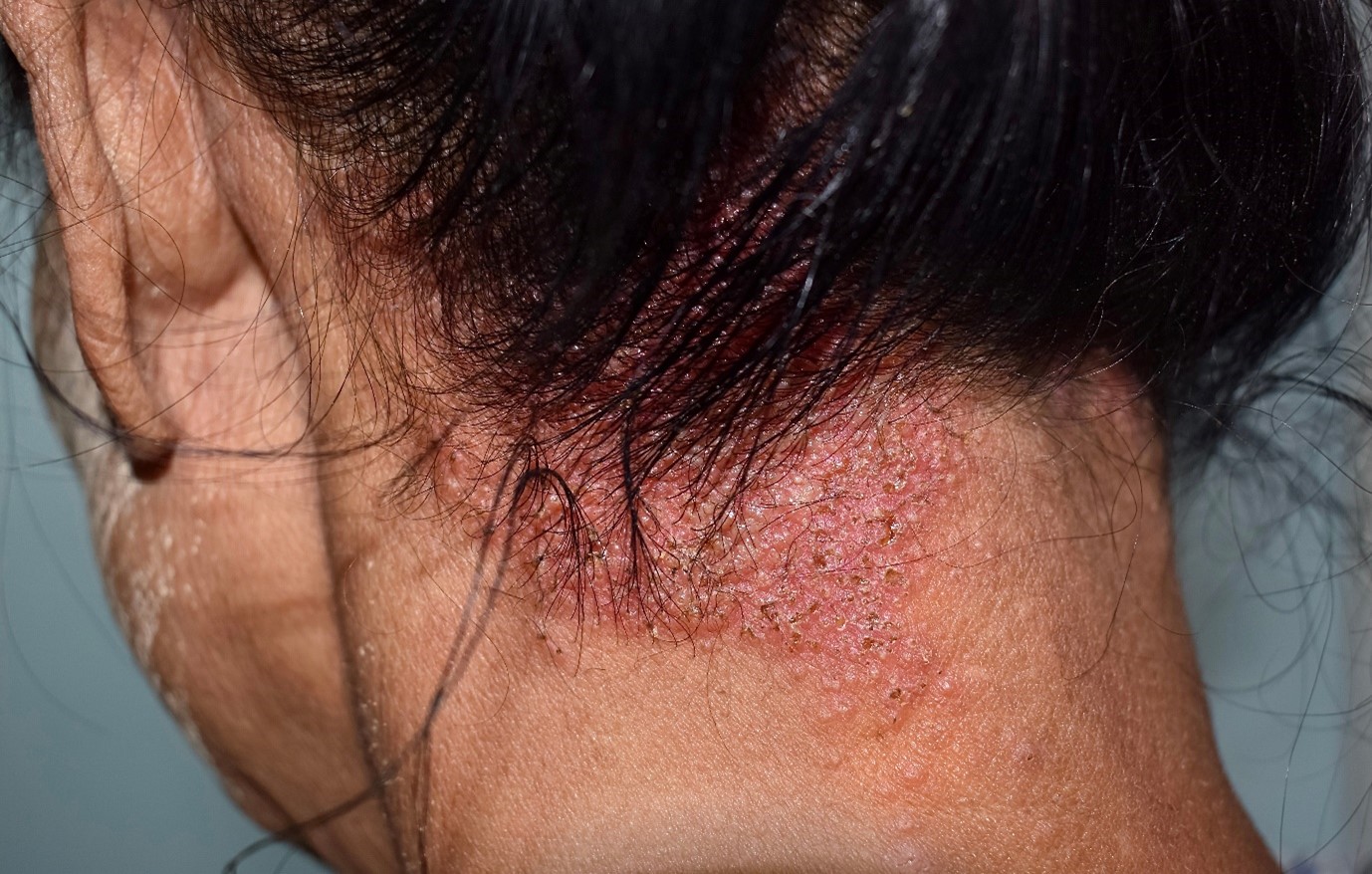Seborrheic Dermatitis: Symptoms, Diagnosis, and Treatment
What is Seborrheic Dermatitis?
According to Mayo Clinic, Seborrheic Dermatitis is a common skin condition that mainly affects your scalp. It causes scaly patches, red skin, and stubborn dandruff. Seborrheic dermatitis can also affect oily areas of the body, such as the face, sides of the nose, eyebrows, ears, eyelids, and chest. Seborrheic dermatitis may go away without treatment. Or you may need many repeated treatments before the symptoms go away. And they may return later. Daily body cleansing with gentle soap or shampoo and conditioner on your hair can help reduce oiliness and dead skin buildup. Seborrheic dermatitis is also called dandruff, seborrheic eczema, and seborrheic psoriasis. For infants, the condition is known as cradle cap and causes crusty, scaly patches on the scalp.
What are the signs and symptoms of seborrheic dermatitis?
The most common symptoms of seborrheic dermatitis are the following:
-
A red rash that develops in conjunction with yellowish scales.
-
If present in other parts of the body, seborrheic dermatitis may appear as dry flaky skin, red rash, yellowish scales, and itchiness, although this is not always present.
-
Seborrheic dermatitis can also appear on the face, upper chest, or groin. The rash tends to be worse in areas where the skin is oily or greasy, such as the scalp, forehead, and creases of the nose.
-
Seborrheic dermatitis will occasionally cause hair loss around the affected areas. This is thought to be due to vigorous scratching of the scalp, and other possible causes, including fungal infections.
How is seborrheic dermatitis diagnosed?
A doctor or dermatologist diagnoses seborrheic dermatitis by taking a thorough medical history of the patient, including symptoms and signs, such as scaling and redness. Typically, patients are middle-aged adults with a history of itching and flaking that began on the scalp but may extend to other parts of the body. Seborrheic dermatitis can look similar to other skin conditions such as atopic dermatitis or psoriasis. Tests may be needed to rule out these conditions if they have not already been diagnosed. Your doctor will also check your skin for other conditions that may have similar symptoms. They may take a skin sample to test for the presence of an underlying condition, such as psoriasis or eczema. The doctor may also ask about any medications you are taking, and whether you have been using new cosmetic products, soaps, or detergents.
What causes seborrheic dermatitis?
#1. Malassezia Fungi. In most cases, seborrheic dermatitis is caused by the overgrowth of a yeast called Malassezia, which naturally lives on the skin of adults. It isn't contagious, but it can be passed from one person to another during close contact. It's also possible to develop seborrheic dermatitis in areas where there is no contact with other people.
#2. A person's immune system. Seborrheic dermatitis is an inflammatory skin condition that results from a person's immune system responding to the presence of Malassezia fungi. Normally, these fungi don't cause any issues, but if you're prone to seborrheic dermatitis, your immune system will overreact and trigger an inflammatory response. That inflammation causes irritated skin that can look red and flaky, be covered in white or yellowish scales, and become very itchy. That inflammation can also cause your skin to form crusty areas with scales on top.
#3. Hormones. Your hormones may also play a role in triggering seborrheic dermatitis. In particular, an increase in androgens can cause your hair follicles to produce more sebum (oil). This sebum can then lead to inflammation that causes the redness and itching of seborrheic dermatitis. This may explain why teenagers, who experience a rise in androgen levels during puberty are prone to developing seborrheic dermatitis.
#4. Stress and Fatigue. Stress and fatigue are significant factors in causing seborrheic dermatitis, so stress-reducing activities and good sleep habits can significantly help you manage your symptoms. Making stress reduction a regular part of your routine can help prevent flare-ups, and it can also reduce the severity of flare-ups that do occur.
#5. Genetic Predisposition to the Condition. It’s difficult to determine whether you have a genetic predisposition to seborrheic dermatitis. However, it’s worth noting that the condition often runs in families and appears during particular life stages when hormonal changes occur (such as puberty).
If you think you might have seborrheic dermatitis, you should see a Doctor.
If you think you might have seborrheic dermatitis, see a doctor. They can give you an accurate diagnosis and carry out an appropriate treatment plan. You can also do some things at home to help ease your symptoms:
-
wash regularly with mild cleansing products
-
avoid using scented products near the skin (aftershaves, perfumes, etc.)
-
only use shampoo and conditioner with natural and organic ingredients like pHat 5.5 Seborrheic Dermatitis Shampoo and Conditioner twice or as desired a week until your symptoms improve
To accurately identify seborrheic dermatitis and rule out other conditions, it’s important to visit a doctor for an official diagnosis. Your doctor will give you a treatment plan to help relieve symptoms and prevent them from getting worse.
Treatment option if you have seborrheic dermatitis!
Don't go crazy when seborrheic dermatitis occurs again! Our pHat 5.5 Face & Body Cream is specially formulated to bring your skin’s pH closer to the ideal. This cream will gently cleanse and provide superior protection by creating a natural shield against sebum, sweat, and bacteria, leaving your skin balanced, moisturized, and healthy. It penetrates deep into your skin to provide deep hydration and heal your skin. It also has anti-inflammatory properties to soothe and relieve dermatitis and other skin conditions.
pHat 5.5’s products are designed to heal and nourish in every way. Made with only natural and organic ingredients, you no longer have to worry about what you’re putting on your skin. Instead, simply let our products do their job to gently soothe your symptoms and, at the same time, reveal the healthy, beautiful skin and hair nature intended.



